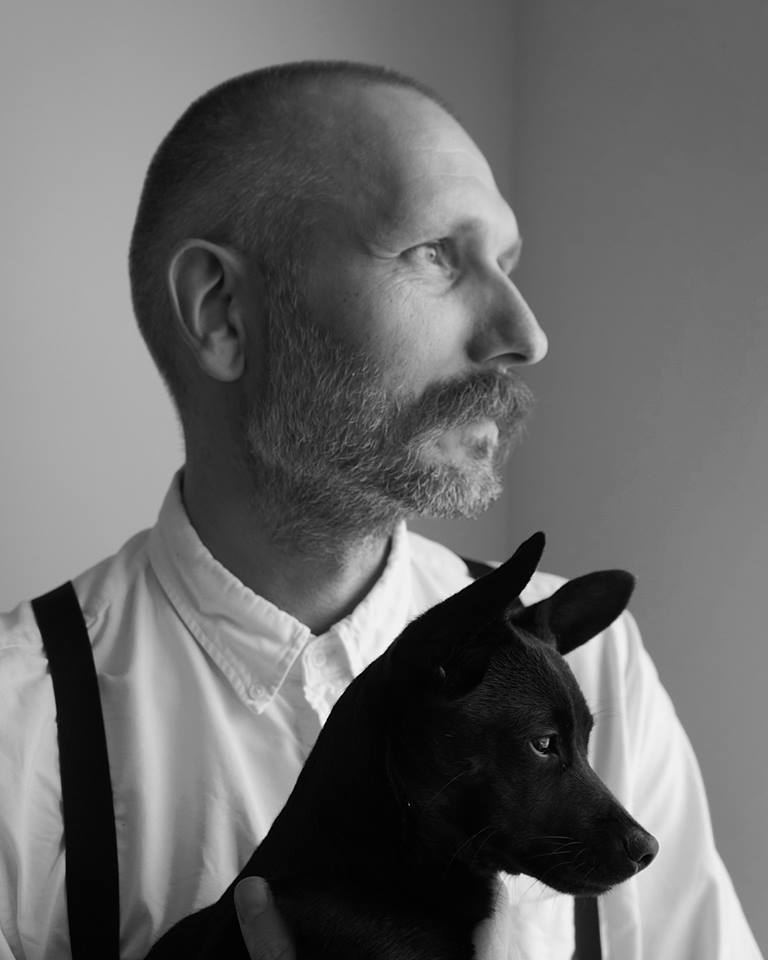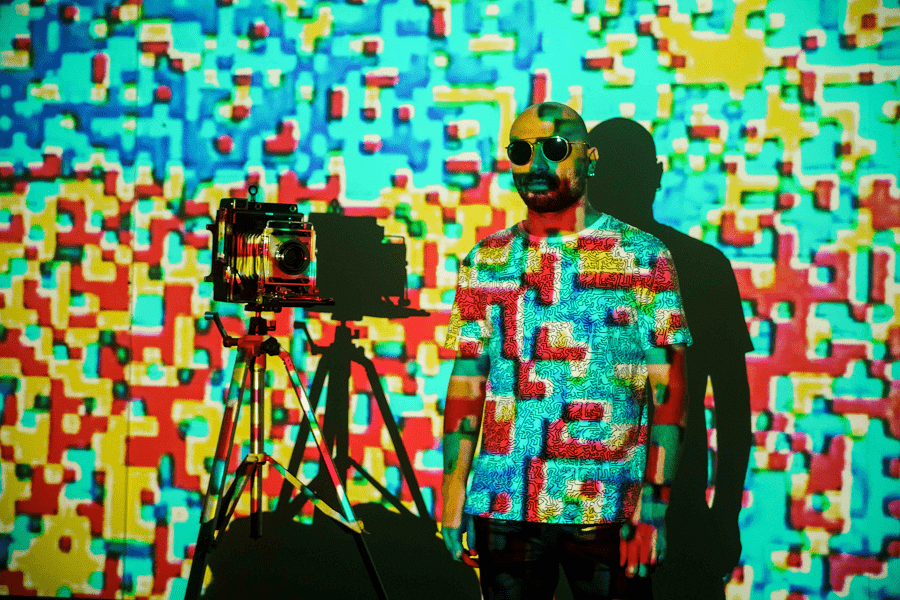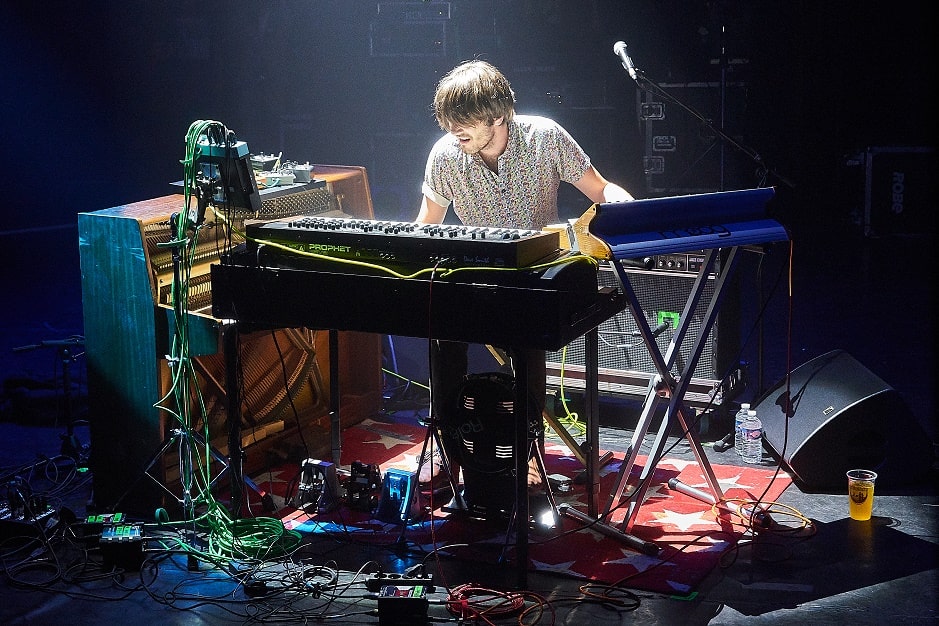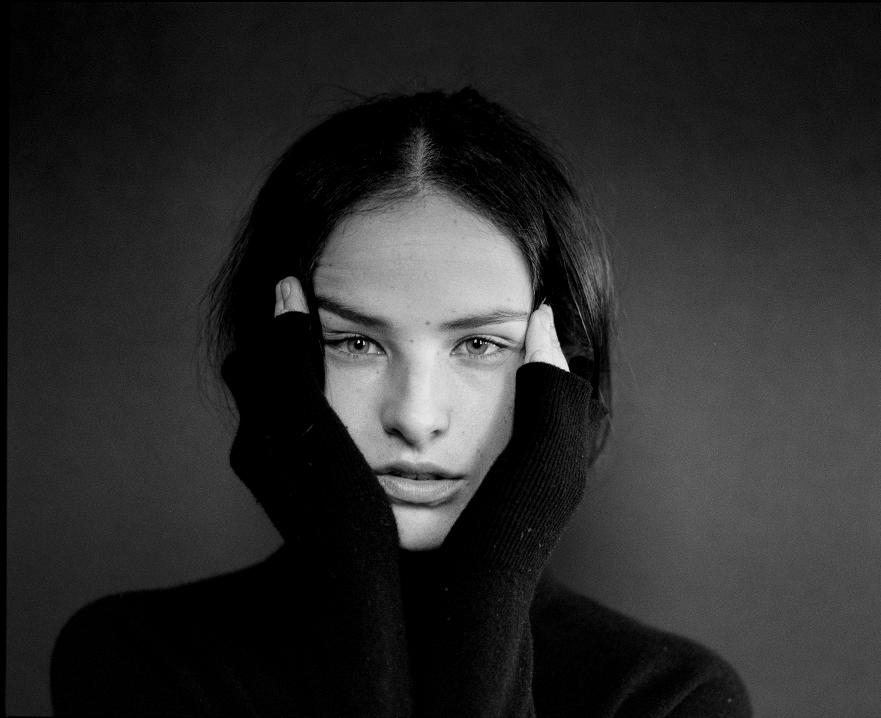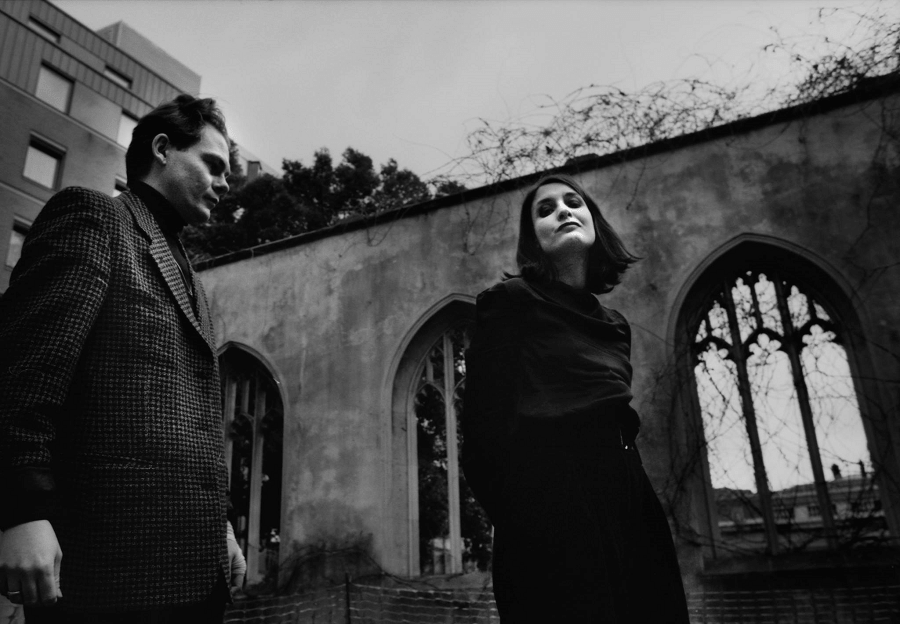Founder of Hess Is More Mikkel Hess talks about magic abilities of music, super hit Yes Boss, gloomy atmosphere of last album, his works for cinema and theater, as well as much more..
Known to the public most famously by their super hit with its languidly erotic vibe “Yes Boss”, Danish band Hess is More actually is much more than this excellent pop song. Founded by the musical wizard with his rich musical background, Mikkel Hess, the band travels between New York and Copenhagen and describes themselves as a Circular Transatlantic Ensemble.
Mikkel Hess as the main mastermind of Hess is More, is without a doubt the boss of this unusual musical formation. This large musical family has band members who often alternating the band’s set-up from show to show. This approach gives a lot of space for experiments with different shapes of musical expression. You can easily see Hess is More like a big and powerful 9-piece band shaking the floors of big musical festivals, or playing in cozy jazz clubs with 4-5 people on stage, or in a special trio set-up that is generally mostly at dance nightclubs. This variety is a certain trademark of Hess is More as a live band.
Besides their unforgettable live performances, Hess is More has 6 studio albums under their belt and a bunch of fantastic music videos which perfectly highlight the band’s vibe and aesthetics. Mikkel Hess also has a lot of side projects – he also works as a composer making music for movies and the Royal Danish Theatre.
All Andorra had a chance to talk with Mikkel Hess about his plans for Hess is More, his latest works for the cinema and theatre, the mood of their latest album, his feelings about the bands super hit “Yes Boss”, views on performing in Andorra, and many more.
Interview: Dmitry Tolkunov
Hi Mikkel, thank you very much for finding time for us. What are you up to at the moment with Hess is More? Do you have any plans to release new songs or videos?
Our last album, called “80 years”, was released in December 2017. Since then we have been releasing singles and videos for the songs from the album, so we did it in a kind of backwards way, not as it is usually done – first singles and videos and then an album. We have been touring quite a bit with the new repertoire and we are now planning concerts in summer and autumn in the United States, Asia and Europe. This will complete the natural cycle of the album and we’re starting to think about creating new music again.
As I know you have two teams, one for the USA tours that consists of American musicians, and a second one for European tours – mostly your Denmark mates. Is it complicated to work with two bands?
In a way, it is much less complicated than I had thought it would be – like for instance, we don’t buy as many flight tickets this way. And I believe that there can be cross-pollination between the musicians; that the inspiration can fly across the Atlantic from one crew to the other. And it’s really great to work with different musicians – I think it keeps the music fresh and helps to develop it. I can say that I bring the things that I’ve learned in a suitcase from one crew to the other. But we often mix the bands together, some people from the US crew come play with us in Europe, as guys from the European crew sometimes take part in our American gigs. It creates a family spirit and extends the transfer of knowledge.
And with which crew did you record the last album – the European or American one?
Mostly with the American musicians. It was recorded in New York, in my friend, Andrew Raposo’s studio in Brooklyn, who also plays in a band called Midnight Magic. Andrew is a regular Hess is More member now and he also co-produced the last album with me.
Do you think that the environment, the place where you create music has a big influence on it?
Yes, I think it is like with everything; you are what you eat. Everything that happens in our daily lives becomes an influence. I don’t see music purely as some mystical substance that is downloaded to you from somewhere. There is, of course, a part of this thing, but also it is influenced by factors such as the place where you do it, the studio equipment, the instruments you play and people with whom you work.
You are also known for loving to experiment with different band set-ups. Hess is More performs regularly as a big 9-piece band but you also have a 5-piece and 3-piece band version. Which do you enjoy to do more – a big band performance or a more minimal edition?
I think it depends on the situation. The thing that I’m chasing when I create different scenarios for live performances is to have all the group with the same mission, to such a degree that we can actually reshape the material for the moment. But in order to do that we must be on the same frequency, be tight together and prepared for the performance. Of course, you can also play completely improvised music – it is really interesting and a lot of people do it very well, but it is not what Hess is More is looking for. The most interesting for me is to get what we do on stage very aligned, and sometimes it can happen in a small setting because if it is 3 people in a certain way it is easier to communicate. This communication can get more complicated if there are 9 people on stage, but there is a great thing about a collective energy when all 9 people can tune in and be on the same mission you can get a great feeling from it.
There is a great thing about a collective energy
I have a feeling that the mood and the vibe of Hess is More’s music has changed radically over the years. If your early days’ albums were an example of cheerful and ironical pop-music, your last album has a really dark and gloomy vibe. Does it have something to do with your personal mood?
Well yes, the vibe is different if we compare to early Hess is More works of “Yes Boss” time. If we look at the project like a journey, we can see the album that we had in 2011 “Creation Keeps The Devil Away” as the middle of it. And there was a song there called “Going Looking For The End Of The World”. So in this context, we can say that the guy from 2011 was looking for this end of the world and the guy in 2017 has finally found it. You know it’s like when you are starting to explore something; you get excited and want to go further to explore it totally.
The guy from 2011 was looking for this end of the world and the guy in 2017 has finally found it
And this is one of the reasons for this gloomy vibe of the last album where we have these songs, with this disillusioned sense like “It’s Backwards, No Matter What I Do”. And there was, of course, some personal things that reflected on the mood of the album –my father passed away when we were recording the album. Actually the first early sketch for the song “80 years” was created as I was travelling to celebrate my father’s 80’s birthday. It was only later, after his death, that I realized the connection that the music had had all along. Music sometimes has a magic ability to see into the future.
But I think the mood of the music is like the seasons, like the sun that goes up and down. So maybe after this darker sounding album we will move again towards more sunshine.
Music sometimes has a magic ability to see into the future
Since “Yes Boss” you have produced a wide variety of music, but many people still associate you only with this song, which is your super hit and they expect to hear it during every concert. Is this annoying or have you managed to take it stoically and with a sense of humor?
I think I’ve gone through different phases of my relationship with this song. When we recorded it, we didn’t ever think that it would become such a big hit. We just thought that it would be a good and funny idea to make a song about a kind of misogynist studio producer who wants to keep everything under control, but clearly at the end, it is understood that the woman that sings for him is the only one who is in charge. We put some sexual humor in the song and had a laugh about it. Suddenly it became a hit and it was very nice, it opened a lot of doors for the band. Since then, we have made a lot of different music and at one point, I felt that we are going to break up with “Yes Boss” because this pop song with its sexy humor had very little in common with the sensitivity of the music that we were doing at that moment.
We had a period when we didn’t play “Yes Boss” live. But now it is coming back to our live repertoire in different versions. The great thing about some songs is that after some years their meaning can change according to what is happening to you personally and in society and with the political climate, and I think this is what happened with “Yes Boss”. There is so much focus in the modern world on gender difference and harassment that in this context “Yes Boss” is seen more clearly as a satire on a stereotypical dominant male. Some fans told me that they see some hidden political message in it and that’s another great thing about music – that different people can interpret it in different ways.
I think one of the reasons for the popularity of “Yes Boss” was the cool, minimalistic video. And your videos are always great and reflect the vibe of the music. The ones you had for the last album are really trippy and dark, reflecting the music style well too. Who directed them?
We made these two videos with my friend, Henrik Vibskov, who is also a fashion designer, visual artist and he plays drums sometimes with us. It was the first music video he had ever directed. Both of them were exhibited in museums, so they are like a cross between visual art and the music world. The video for “Its Backwards No Matter What I Do” was exhibited in Manhattan’s Museum of Art and Design and alongside a special, more experimental and minimalistic version of the track than on the album. And the video for “80 years” was shot mainly at Henrik’s exhibition at The 21st Century Museum of Contemporary Art in Kanazawa, Japan. It was like an art project, an installation that was shown and filmed for the music video at the same time.
This video is like a cross between visual art and musical world
In my opinion, one of your greatest videos is for “Bearsong”. Who made it?
It is from our previous album and was done by the Danish film director, Jonas Alexander Arnby, who is also a great friend of mine. I’m actually doing music for his new movie “Suicide Tourist”. Nikolaj Coster-Waldau (who played Jaime Lanister in “Game of Thrones”) has a role in the film too. And in “Suicide Tourist” you will be able to see a very different side of him as an actor.
This video was done by a Danish film director Jonas Alexander Arnby
Are you doing a lot of projects besides Hess is More at the moment, like music for cinema and theatre?
I’m also working with the Brazilian film director, Marco Abujarma. I’ve recently made music for a ballet from the Royal Denmark Theatre, called “Uropa”, it is a project which involved 5 ballet dancers and five people that were seeking asylum in Denmark. It is a kind of multidisciplinary performance in which ballet crosses the line between storytelling and music. It was a great experience and I’ve learned a lot from it. If we talk again about cross-pollination maybe I can compare myself with a bee that is traveling and bringing pixie dust from one flower to another. This work I do for cinema and theater gives me a big pool of information. I’m learning a lot of things from them that gives me a lot of inspiration that I use after in the music that I do with Hess is More.
You are touring a lot with Hess is More. Do you have some favourite cities or countries in which you like to perform most of all?
Usually, you have a certain set of expectations for each concert. And over the years I figured out that it is really hard to deal with these expectations. Of course, I enjoy the touristic aspect of our traveling and like to go to perform and see cool and different cities like Istanbul or Montreal. But if we talk about the concert, sometimes a moment of the year could be some random show at a friend’s party for 30 people in the Danish suburbs, and other times it is a show at some festival on a big stage with a perfect sound system. So I try to take each show with the same attitude. It’s not the right approach if you think that you know that in advance – yeah, today we are going to have a great time on stage. Of course, you have to always be sure that you are well prepared to give a gift to the room that people will enjoy, but at the same time you must keep a neutral expectation for each show and stay humble. One of my friends says that it’s best to describe this approach like this: “Be kind to music and music will be kind to you too”
Have you ever performed in Andorra and would you like too if there was ever be the possibility?
I have never been to Andorra but obviously, I would love to go there and to share our music with people. For me, this country has a flavor of something that has to be explored. So please invite us if you can!
We will try out best and really hope to see you in Andorra. Thank you for this great interview Mikkel.



